With over 1,000 years of culture, Hanoi is a city that will surprise, charm, and captivate you. Despite centuries of war, natural disasters, and new regimes, this city has transformed from a swampy region into the vibrant and alluring capital it is today. Refer to Vietnam Adventure’s list of famous places in Hanoi right here, and get ready to have your mind blown!
Some of the hottest attractions in the inner of Hanoi city
Ho Chi Minh Mausoleum
The Ho Chi Minh Mausoleum is situated in one of the most revered areas of Hanoi city. This is basically a solemn marble structure housing the body of President Ho Chi Minh in a glass case.
President Ho Chi Minh is a legendary leader for the Vietnamese people and an internationally renowned figure. He played a pivotal role in liberating Vietnam from French colonial rule and American imperialism, while also inspiring anti-colonial movements worldwide.
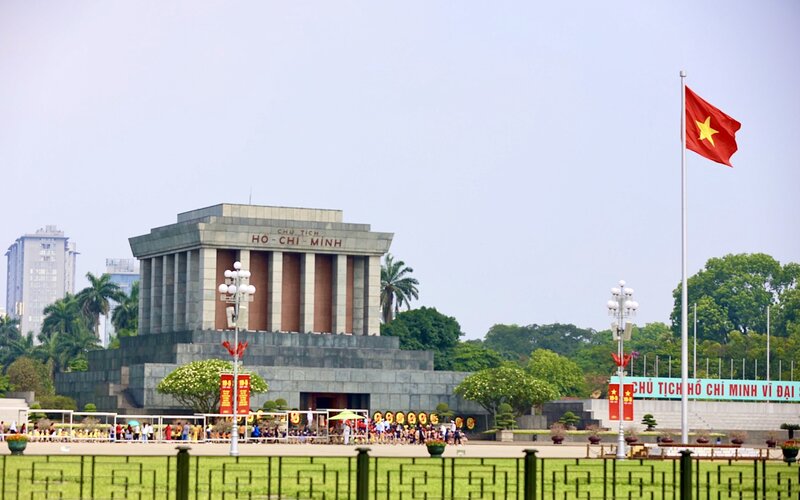
Wandering around, you can also visit the wooden stilt house where the president lived during his life. It’s filled with personal mementos and offers a wealth of things about the Vietnamese Revolution’s history.
You’ll also come across the unique One Pillar Pagoda. True to its name, the entire structure is perched on a single pillar, just like a lotus flower.
Imperial Citadel of Thang Long
Just a stone’s throw from the Ho Chi Minh Mausoleum is the Imperial Citadel of Thang Long. This is one of the oldest remnants of Vietnam’s feudal history and a UNESCO World Heritage site.
Construction of the Citadel began in the 7th century under the Dinh Dynasty, but it was significantly expanded and developed during the Ly, Tran, and Le Dynasties. In 1010, King Ly Thai To moved the capital from Hoa Lu to Thang Long (modern-day Hanoi) and started building the new capital here.
Over the centuries, the Imperial Citadel became Vietnam’s political, cultural, and military hub. In 2010, it was recognized by UNESCO as a World Cultural Heritage site.
Military History Museum
The Vietnam Military History Museum is a trove of precious artifacts, all telling the heroic tales of the Vietnamese military and people through various historical periods. The museum was built in 1956 right on the grounds of the ancient Hanoi Citadel, which is a site rich with feudal history.
The outdoor exhibition area showcases an impressive array of weapons and war vehicles like tanks, planes, and artillery. One of the highlights is an American B-52 bomber, which was shot down during the resistance war against the U.S imperialists.
Inside, the museum’s exhibits span from the era of the Hung Kings through the resistance wars against foreign invaders, to the Vietnam War and modern times. The collection includes weapons, military uniforms, documents, photos, and models, each piece bringing history to life.
Temple of Literature (Văn Miếu – Quốc Tử Giám)
The Temple of Literature is a timeless symbol of Vietnamese culture and education. Finished in 1070 during the Ly Dynasty, this amazing temple was initially dedicated to worshiping Confucius and other revered sages., Quoc Tu Giam, Vietnam’s first university, then was established here in 1076, where millions of scholars for centuries were shaped.
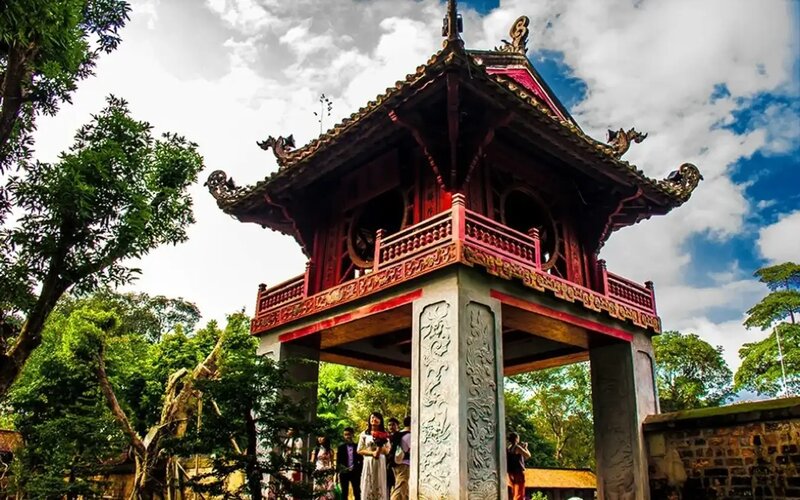
As you stroll through inside, you’ll encounter hundreds, if not thousands, of stone turtles, each carrying a stele on its back. These steles are etched with the names of laureates, or as the ancient Vietnamese called them, Trạng Nguyên, Bảng Nhãn, và Thám Hoa. Simply put, they are the top three achievers in the imperial examinations.
Don’t miss the Khuê Văn Các, one of Hanoi’s iconic landmarks. It’s essentially just a red pavilion standing on four sturdy wooden pillars.
Hoan Kiem Lake
Hoan Kiem Lake is a serene freshwater lake surrounded by many of Hanoi’s captivating attractions. Look at the middle of the lake, you can find Turtle Tower, another iconic symbol of Hanoi. Meanwhile, the picturesque Ngoc Son Temple stands on a small island, connected to the shore by the brilliant red Thê Húc Bridge.
The lake is beautiful itself, but what really sets this lake apart is the legendary tale behind it. According to the story, after driving out the Ming invaders (a feudal dynasty of Chinese) from the country, King Le Loi was boating on the lake when a golden turtle suddenly appeared. The turtle demanded the return of the magical sword that the Dragon King had given the king to defeat the enemies. This is why the lake earned its name “Hoan Kiem,” meaning “Return the Sword.”
Hanoi Old Quarter
In the heart of Vietnam’s bustling capital lies a maze of narrow, ancient streets known as the “36 Pho Phuong”, meaning 36 old streets. Originally, each of these streets specialized in a particular trade or craft.
And each guild-owned street was named after the commodity it was known for. For example, Hang Tre Street was the go-to place for bamboo products, while Hang Than Street specialized in charcoal goods.
This Old Quarter isn’t just a fantastic spot to dive into Hanoi’s rich history and vibrant culture, but also a street food paradise, by the way. Then as night falls, this place becomes even more lively with its bars, restaurants, and night markets. Don’t miss out on fresh beer at the bustling “beer street” Ta Hien, where the music and laughter never seem to stop.
Hoa Lo Prison
Another must-visit spot to dive into local history is Hoa Lo Prison, which is deeply connected to Vietnam’s struggles against French colonialism and American imperialism. Only a small part of the original prison remains, but it’s enough to give visitors a glimpse into the harsh conditions endured by its inmates.
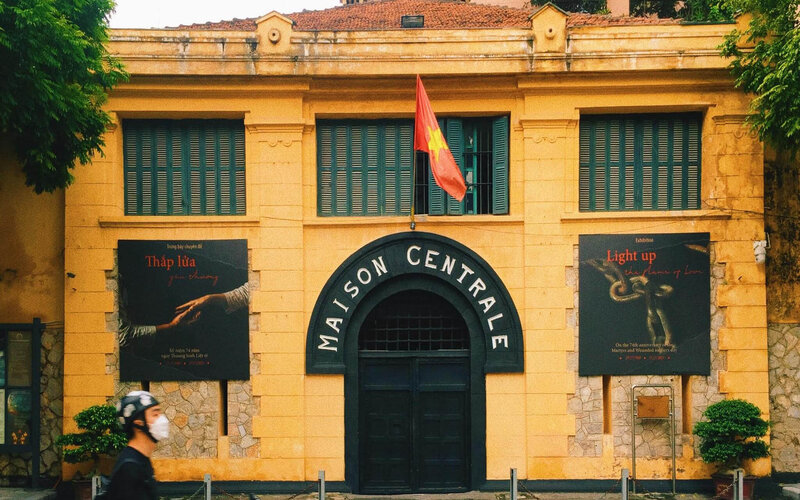
Built by the French in 1896, Hoa Lo Prison was initially used to detain political prisoners and resistance fighters. During the colonial era, thousands of Vietnamese revolutionaries were imprisoned, tortured, and executed here.
During the anti-American resistance war, Hoa Lo became a detention center for American pilots shot down during bombing missions over the North of Vietnam. The American POWs officially dubbed it the “Hanoi Hilton” due to the severe conditions. Among its most famous inmates was John McCain, who later became a U.S. senator and is someone who has made great efforts to mend Vietnam-US relations.
Dong Xuan Market
If Saigon has the iconic Ben Thanh Market, Hanoi boasts the Dong Xuan Market. Right in the heart of the Old Quarter, this market has been an essential part of the city since its establishment in 1889.
As the largest indoor market in Hanoi, Dong Xuan market offers a diverse array of goods. From clothing and fabrics to household items and fresh produce, this market is truly a shopper’s paradise.
Strolling through the stalls, you’ll be captivated by the bustling atmosphere and the enticing aromas of street food. This place is also the perfect spot to hunt for unique souvenirs that capture the essence of Vietnam.
West Lake
A stroll or bike ride along the shores of West Lake in the afternoon is a fantastic way to chill. It is Hanoi’s largest natural lake and is often called the city’s “green lung.” Its serene waters and lush surroundings offer a refreshing escape from the hustle and bustle of the city.
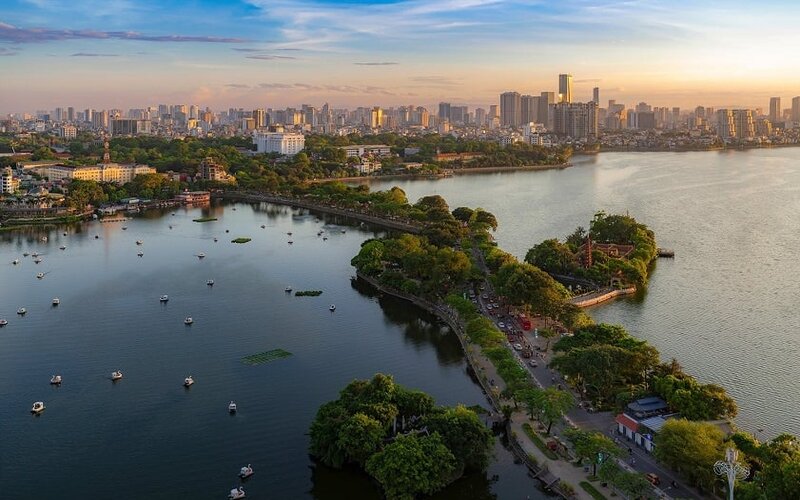
West Lake was once part of the Red River, but changes in the river’s flow led to the formation of this standalone lake. From here, you can easily explore architectural highlights likeTran Quoc Pagoda, Phu Tay Ho, Quan Thanh Temple, and West Lake Water Park.
Tran Quoc Pagoda
Perched on a quaint peninsula along West Lake, Tran Quoc Pagoda stands as one of Hanoi’s oldest and most stunning temples with a history of over 1,500 years. This site is not only a significant religious landmark but also a tourist and cultural hotspot.
Constructed in the 6th century during the reign of King Ly Nam De, the pagoda was instantly called Khai Quoc. It is renowned for its harmonious and serene architecture, blending ancient styles with the breathtaking natural scenery of West Lake.
Here, you can admire its architectural splendor while finding tranquility in its peaceful ambiance. The pagoda is open daily with no admission fee, but you are encouraged to dress respectfully and maintain cleanliness during their visit.
Some Most Famous Suburban Hanoi Attractions
Bat Trang Pottery Village
Bát Tràng Pottery Village, situated along the banks of the Red River in Gia Lâm District, Hanoi, stands as one of Vietnam’s most renowned and ancient traditional craft villages.
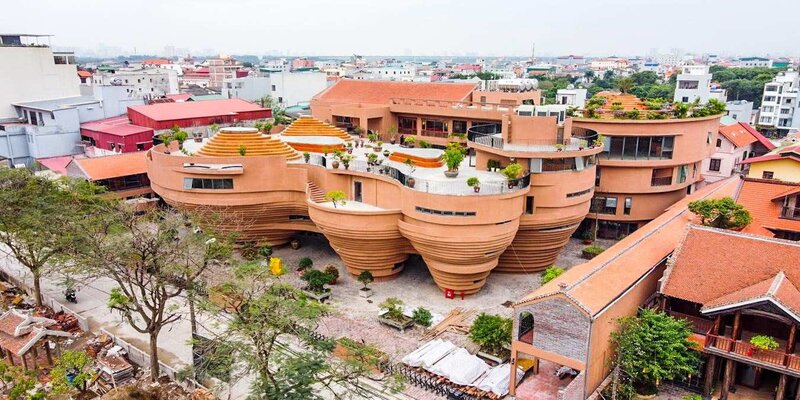
Established in the 14th century during the Tran Dynasty, Bát Tràng has flourished over the centuries, gaining fame for its high-quality ceramics. These exquisite products not only meet domestic demands but are also exported to numerous countries worldwide.
Ba Vi National Park
Located about 60 km west of central Hanoi, Ba Vì National Park is one of Vietnam’s most renowned and captivating nature reserves. The park was established in 1991, spans approximately 11,372 hectares and is home to a diverse array of rare flora and fauna.
The park boasts a rich variety of plant species, with over 1,200 types, including rare ones like Da Lat pine, Pa Co pine, queen’s crape myrtle, and unique orchids. The fauna is equally diverse, featuring more than 110 bird species, 60 mammal species, 61 reptile species, and 27 amphibian species.
Van Phuc Silk Village
Van Phuc Silk Village, with a history dating back over 1,000 years to the Dinh and Ly dynasties, has become renowned for its high-quality silk products.
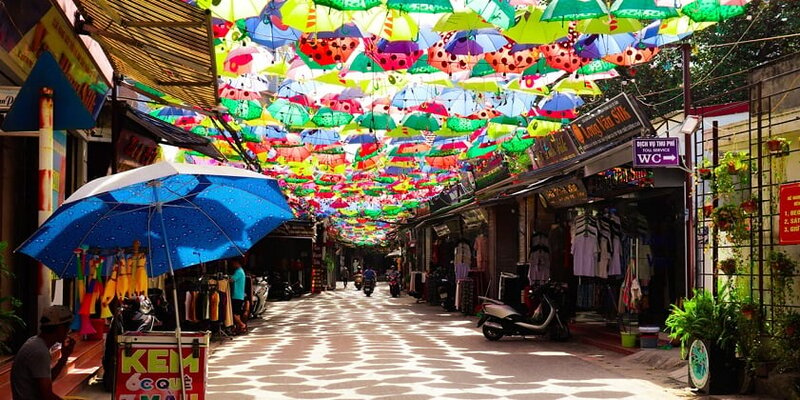
Over the centuries, Van Phuc has continuously evolved, producing silk that was once favored by royalty and courtiers for use in the imperial palace. Today, its silk remains highly prized for its softness, durability, and exquisite patterns, continuing to captivate admirers worldwide.
Duong Lam Ancient Village
Đường Lâm is the birthplace of two significant Vietnamese historical figures, Phùng Hưng and Ngô Quyền. This ancient village is famed for its stone houses, traditional architectural structures, and serene rural landscapes.
Perfume Pagoda
Perfume Pagoda, or Huong Son, is a complex of temples located in Huong Son Commune, My Duc District, Hanoi. It is one of Vietnam’s most significant cultural, historical, and religious sites, drawing millions of visitors and pilgrims annually for worship and spiritual reflection.
The Bottom Line
Hanoi has plenty to delight your senses, offering sights to see, flavors to savor, and stories to uncover. And the 10 famous places in Hanoi that Vietnam Adventure has listed above are must-visits for anyone exploring this charming capital. As a bonus, Vietnam is very safe to travel (and to live in) and Vietnamese people are very sociable.

 Ms.Mita
Ms.Mita